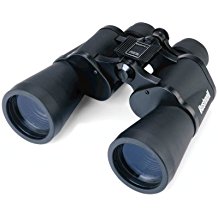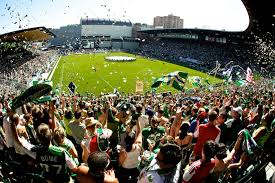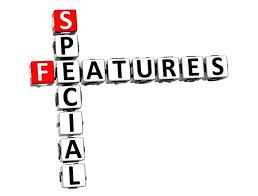
How to Buy the Right Binoculars.
Binoculars are a great invention. They have been a huge aid in everything from watching sporting events, to operas to war. Not many inventions are used in such a wide variety of ways and by such a different group of people. That is why finding the best rated binoculars is so important.
Not many inventions are used in such a wide variety of ways and by such a different group of people. That is why finding the best rated binoculars is so important.
Binoculars have been around for a while, the first binocular telescope was invented by J.P. Lemiere in 1825. He basically put two small prismatic telescopes together. The problem was they were really long. The next major improvement came in 1890 when Karl Zeiss introduced the improved prism binoculars. Why am I discussing this? So you will have an understanding of how hard it was to get to the modern day top rated binoculars that we recommend on our site.
Check out our article: The Best Binoculars Buying Guide for a list of the binoculars we recommend.
When looking for the best binoculars to buy, let’s start with the numbers. Binoculars are listed as 7×35 or 8×50 when you are looking at their features. The first number in our example above (7 or 8) is the magnification. If you buy a set of binoculars that are 7×35 it means that objects in the distance are magnified 7 times their normal size. If you are buying a set of binoculars that are 8×50 then the object is magnified 8 times. Remember, the first number listed is the magnification.
The second number in our examples of either 7×35 or 8×50 refers to the objective diameter. In our examples that would either be 35 or 50 depending on the one you purchased. This number determine the resolution or sharpness of the object viewed by the binoculars. This means that all other things being equal a 8×50 set of binoculars will produce a sharper higher resolution image as compared to a 8×35 set of binoculars.
Another thing to consider is the field of view which is inversely proportional to the  magnification power. Think of field of view this way. The stronger the magnification the smaller the area you can view at distance. You can see a larger area with a 8×50 set of binoculars as compared to a 10×50 set of binoculars.
magnification power. Think of field of view this way. The stronger the magnification the smaller the area you can view at distance. You can see a larger area with a 8×50 set of binoculars as compared to a 10×50 set of binoculars.
The best binoculars to buy depends a lot on what you are going to be using them for. Is the object you want to see a long way away? If so then you probably need a higher magnification even though you will lose some of your field of view. If the object is not as far away or if you need to watch a lot of movement in a bigger area (like a football game) then you probably want to go with a lower magnification so you can see what is going on around the primary point of interest. No one wants to watch a ball game if all you can see is the player you are focusing on and nothing else. Being able to see what is going on around the player is important.
The further away you want to see the more important the objective diameter may be since you will want to have a better resolution at a great distance. A higher objective diameter in top rated binoculars also works better in lower light conditions since the larger diameter captures more light as opposed to a lower objective diameter.
If you wear glasses you should also pay close attention to eye relief, which is the distance your eye must be from the smaller lens at the back. If you plan on using your binoculars while you wear your glasses you must have a larger eye relief distance to accommodate that.
Another important feature to look for in a set of top rated binoculars is an independent focus on at least one of the eye pieces. All good binoculars have the central focus mechanism located between the lens. However, it is also VERY important to have an independent adjustment on at least one of the lens go compensate for differences in your eyes. Almost all of us have at least a slight difference in your eye strength, trust me a good set of binoculars need that independent focus. You will be sorry if you do not listen to me on this one.
An anti-reflective coating is also a big help to reduce glare while using your binoculars. This may not be a must but it is a plus when looking for a top rated binocular set. In fact to me, if you are going to think about the best binoculars on the market you really need to get as many ‘bells and whistles’ as you can … or can afford.
Besides all the above, there are two basic types of binoculars. Porro Prism and Roof Prism.
Porro have the lenses lined up with each other. Many compact binoculars are Porro binoculars. Porro binoculars have greater depth perception and usually offer a wider field of view.
Roof have the lens offset from each other. Many of your higher magnification larger sets of binoculars are Roof Prism binoculars.
I like the Roof when I really want a high magnification. The Porro are great if you want a pair to take hunting or keep in your vehicle.
There is nothing wrong with paying for the features you want in a good set of  binoculars. Most are not overly expensive and the last thing you want is to have problems when you try to use them. Do not forget about the independent focus adjustment and the eye relief (if you wear glasses) those are bigger than you might think.
binoculars. Most are not overly expensive and the last thing you want is to have problems when you try to use them. Do not forget about the independent focus adjustment and the eye relief (if you wear glasses) those are bigger than you might think.
Also, do not splurge on a really high magnification set of binoculars if you want to watch a sporting event at a relatively close range. If you do, all you will be able to see is the object you are focusing on. You are much better going with a lower magnification and a higher objective diameter.
If you are looking for a great set of binoculars, be sure to check out our article:
I am planning to buy Celestron binocular this one kindly help me out is it good for the Birding and hunting?
Celestron Trailseeker 8×42
Specifications
8x magnification
42 mm objectives
25 mm exit pupil diameter
17 mm eye relief
Fully multi-coated (FMC) optics
28 relative brightness
BaK-4 prisms with phase and dielectric coatings
8.1 degrees field of view
Limited lifetime warranty
Weight 1.45 pounds
That one is not a bad choice. A 10×50 would give you a little more magnification and a larger field of view. But … just depends on what you are looking for.